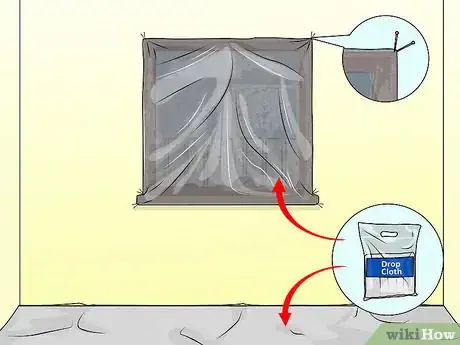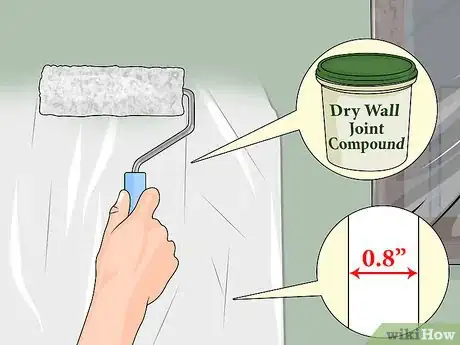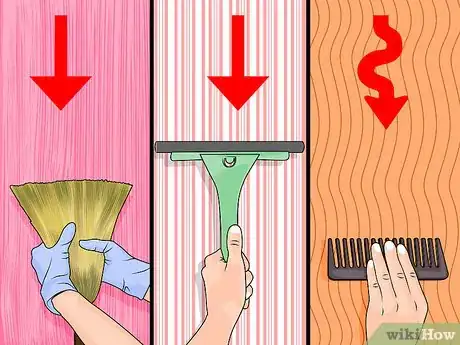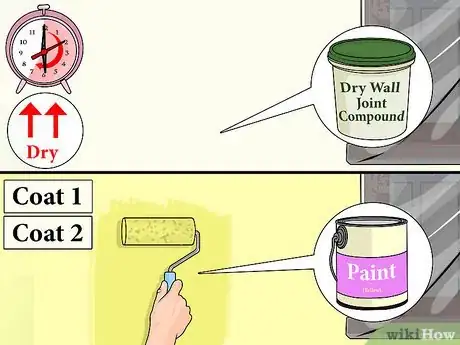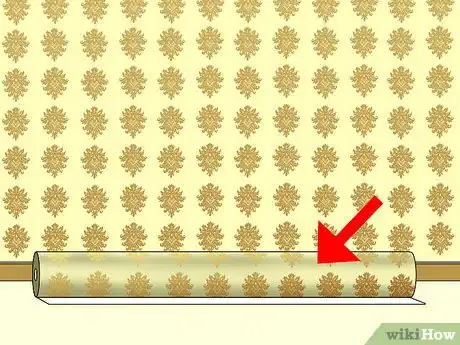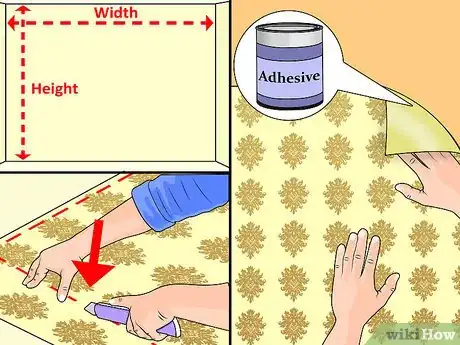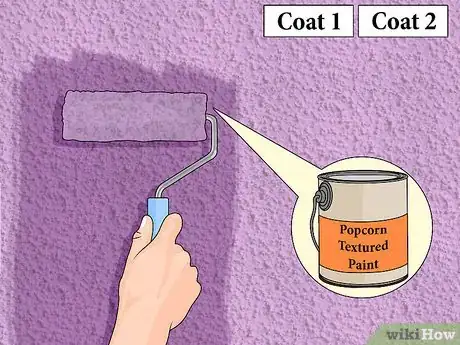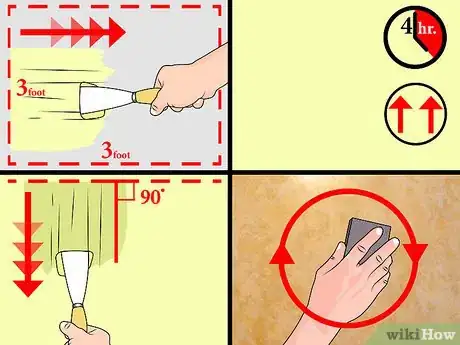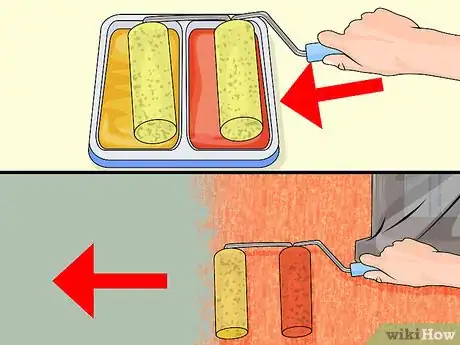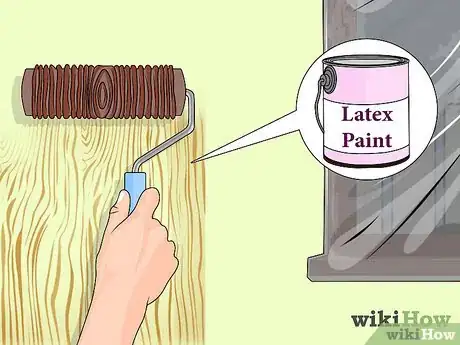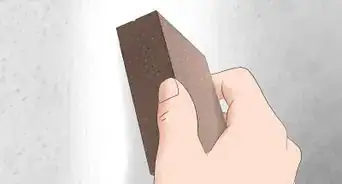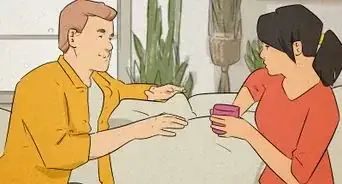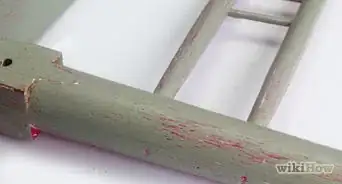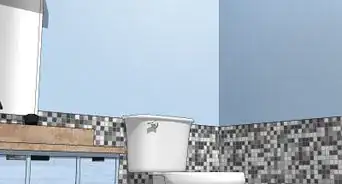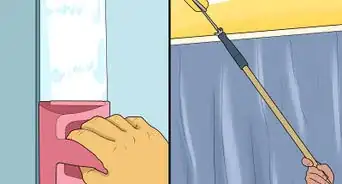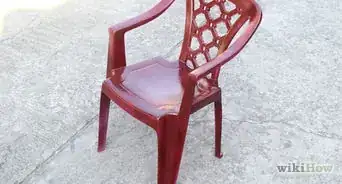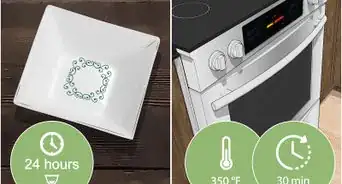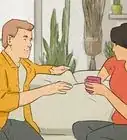This article was co-authored by Mark Spelman. Mark Spelman is a General Contractor based in Austin, Texas. With over 30 years of construction experience, Mark specializes in constructing interiors, project management, and project estimation. He has been a construction professional since 1987.
This article has been viewed 387,019 times.
Retexturing walls is a great way to add personality to home décor. Once the domain of professional home painters, now there are a number of tools available at home improvement stores that make retexturing walls a feasible project for any home. You can also use objects like whisk brooms, combs and sponges to refinish walls. This article will teach you how to retexture walls in the finish of your choice.
Steps
Texturing Using Joint Compound
-
1Lay painter’s plastic around the floor of the room. Place painter’s plastic on windows, affixing them with blue tape to hold them in place. Cover any places that you do not want to get dirty. Retexturing walls is a messy process, so make sure all the painter’s plastic sheets overlap.
-
2Apply a 1/8 inch (0.3 cm) thick coat of drywall joint compound on to your walls. Use a drywall knife to apply the compound.[1] Drywall joint compound is a common building material. It is used to create the smooth finish on top of drywall. It is also a good canvas for retexturing walls. You will retexture after the drywall joint compound has dried completely, so if you are working alone, work on one wall at a time.[2]
- Understand that some of the joint compound will be wiped off during the texturing process. Put on more joint compound than you expect to have on the final product.
Advertisement -
3Choose your retexturing instrument. How you retexture your wall may largely depend on what instruments you use.[3]
- Use a small whisk broom to create the look of grass cloth on a wall. Grass cloth is a cloth that is woven from plant fibers. It resembles linen and is commonly used as wallpaper. By taking the whisk broom and gently gliding it vertically down the wall to the bottom, and then starting again at the top, you can create this cloth-like texture on your wall.
- Drag a thick hair comb or paint comb vertically down the wall to create a texture of thick and even vertical lines. You can also comb in an overlapping "S" curve with the paint comb, to create a curvy, textured line.
- Use a thick-bristled brush to create circles. Leaving the brush in the same position, simply turn it around in one revolution. This should create the look of a circle. Wipe the joint compound off the brush before the next revolution.
- To create vertical beading on your walls, take a window squeegee and cut grooves in it that are a few inches (cm) apart, depending upon how close you would like your beads to be. Start at the top and move the squeegee vertically down the wall. Use a straight motion and a steady hand to create long straight beads, or move back and forth to create a squiggled bead.
- To create a woven look, take the squeegee and draw vertical lines, then drag it horizontally to create boxes that resemble woven fabric.
- To create longer textured curves, use a process called skip troweling. Take a trowel and lightly brush the wet drywall joint compound at 3 to 6 inch (8 to 15 cm) intervals. Let the compound dry and then lightly sand the next day to remove bumps.
-
4Use other inventive surfaces to achieve an even but textured layer. Apart from brushes, combs, squeegees, trowels, you can also use the following items to create a beautifully textured look:
- Sponge: Blot the porous side of a sponge onto newly-applied joint compound and let the pores of the sponge create a wonderful texture.[4]
- Old rag: Blot the flat surface of an old rag against the joint compound for a similar, if less uniform, effect.
- Tissue paper: Lay the tissue paper over the joint compound and depress into the compound using a clean, dry roller.
- Aerosol texture: You can find this at large home improvement stores and it comes in orange peel, knock-down, or popcorn type.
-
5Allow the joint compound to dry before painting. It should take several hours for the drywall joint compound to dry. Afterwards, go over the compound with two coats of paint using a coarse roller.
Texturing Using Wallpaper
-
1Purchase textured wallpaper. Textured wallpaper comes in either rolls or uniform tiles that you hinge, connect, or stick onto your wall. Search for "textured wallpaper" to generate a list of retail textured wallpaper providers.
-
2Apply the textured wallpaper to your wall. Textured wallpaper comes in several different forms, each of which may have different directions. To apply rolls of textured wallpaper, probably the most common kind, simply measure the wall, measure your wallpaper to fit, cut out pieces of wallpaper, and apply them to the wall with a strong adhesive.[5]
Retexturing Using Textured Paint and Special Tools
-
1Pour either sand-textured or popcorn-textured paint into a paint tray.[6] (Most popular paint brands make paint in these textures.) Apply it directly to the wall with a paint roller. Apply 1 to 2 coats and let dry. This is perhaps the quickest way to retexture your walls.
-
2Apply Venetian plaster paint to a large steel spatula. Venetian plaster paint is a 2-tone paint made by popular paint brands to create the look of marble and stone on your walls.[7] Work in a 3 by 3 foot (1 by 1 m) area and apply a small amount of paint in an overlapping, random motion until you have a thin coat on most of the surface. Allow some areas of the original wall to show through. Dry for 1 to 4 hours until it is a lighter color and matte finish.
- Apply a small amount of the Venetian plaster paint to the spatula and skim the surface at a 90-degree angle to even out the surface colors. Let dry as before and repeat until you have achieved your desired texture. Using light grit sandpaper, polish the surface in circular patterns.
-
3Use a double roller to retexture a wall with two colors of paint. Place two complimentary colors of paint in your paint tray. Work in curves going right and left to mix the paint thoroughly on your walls. This method has largely replaced the use of sponges to apply different colors; it is a very efficient method.
-
4Create the look of wood using latex paint and a wood grain tool. Paint a neutral color of latex paint on your wall. Roll a wood grain tool in a tray of paint, and then roll it vertically down your wall, alternating with both sides of the tool to produce the uneven look of wooden boards.[8]
Expert Q&A
-
QuestionCan I texture my wall over painted drywall?
 Mark SpelmanMark Spelman is a General Contractor based in Austin, Texas. With over 30 years of construction experience, Mark specializes in constructing interiors, project management, and project estimation. He has been a construction professional since 1987.
Mark SpelmanMark Spelman is a General Contractor based in Austin, Texas. With over 30 years of construction experience, Mark specializes in constructing interiors, project management, and project estimation. He has been a construction professional since 1987.
Construction Professional Yes. It is fine to spray texture over painted walls, just be sure the walls are cleaned of any texture, dirt, or dust before you begin.
Yes. It is fine to spray texture over painted walls, just be sure the walls are cleaned of any texture, dirt, or dust before you begin. -
QuestionCan you spray texture on walls?
 Mark SpelmanMark Spelman is a General Contractor based in Austin, Texas. With over 30 years of construction experience, Mark specializes in constructing interiors, project management, and project estimation. He has been a construction professional since 1987.
Mark SpelmanMark Spelman is a General Contractor based in Austin, Texas. With over 30 years of construction experience, Mark specializes in constructing interiors, project management, and project estimation. He has been a construction professional since 1987.
Construction Professional Yes. 75% of the time texture is sprayed, where you would use a spray hopper. The other texture styles are troweled on and using a brush or knife to create a texture.
Yes. 75% of the time texture is sprayed, where you would use a spray hopper. The other texture styles are troweled on and using a brush or knife to create a texture.
Things You'll Need
- Plastic drop cloths
- Stickpins
- Drywall joint compound
- Texture paint in sand, popcorn or Venetian plaster consistencies
- Small whisk broom or stipple brush
- Hair comb
- Window squeegee
- Trowel
- Drywall knives
- Paint roller or double paint roller
- Metal spatula
- Wood grain tool
References
- ↑ https://www.bobvila.com/articles/how-to-texture-walls/#.WXDiCYjyvIU
- ↑ http://www.cbsnews.com/news/fresh-looks-for-painted-walls/
- ↑ http://www.cbsnews.com/news/fresh-looks-for-painted-walls/
- ↑ https://www.bobvila.com/articles/how-to-texture-walls/#.WXDiCYjyvIU
- ↑ http://www.diynetwork.com/how-to/make-and-decorate/decorating/how-to-wallpaper-a-room
- ↑ http://www.cbsnews.com/news/fresh-looks-for-painted-walls/
- ↑ http://www.cbsnews.com/news/fresh-looks-for-painted-walls/
- ↑ http://www.cbsnews.com/news/fresh-looks-for-painted-walls/
About This Article
To texture your walls with paint, apply 1 to 2 coats of sand-textured or popcorn-textured paint with a roller and let it dry. For a more unique look, use a double roller to apply two complimentary colors of paint at once. If you do, work in curves to mix the paint thoroughly. To texture the drywall itself, lay painter’s plastic around the floor of the room and apply a 1/8 inch thick layer of joint compound to the walls. Then, texture the drywall with anything from a comb to a whisk broom to get different textures. Let the compound dry before painting. To learn more from our Contractor co-author, like how to apply a textured wallpaper, keep reading!
